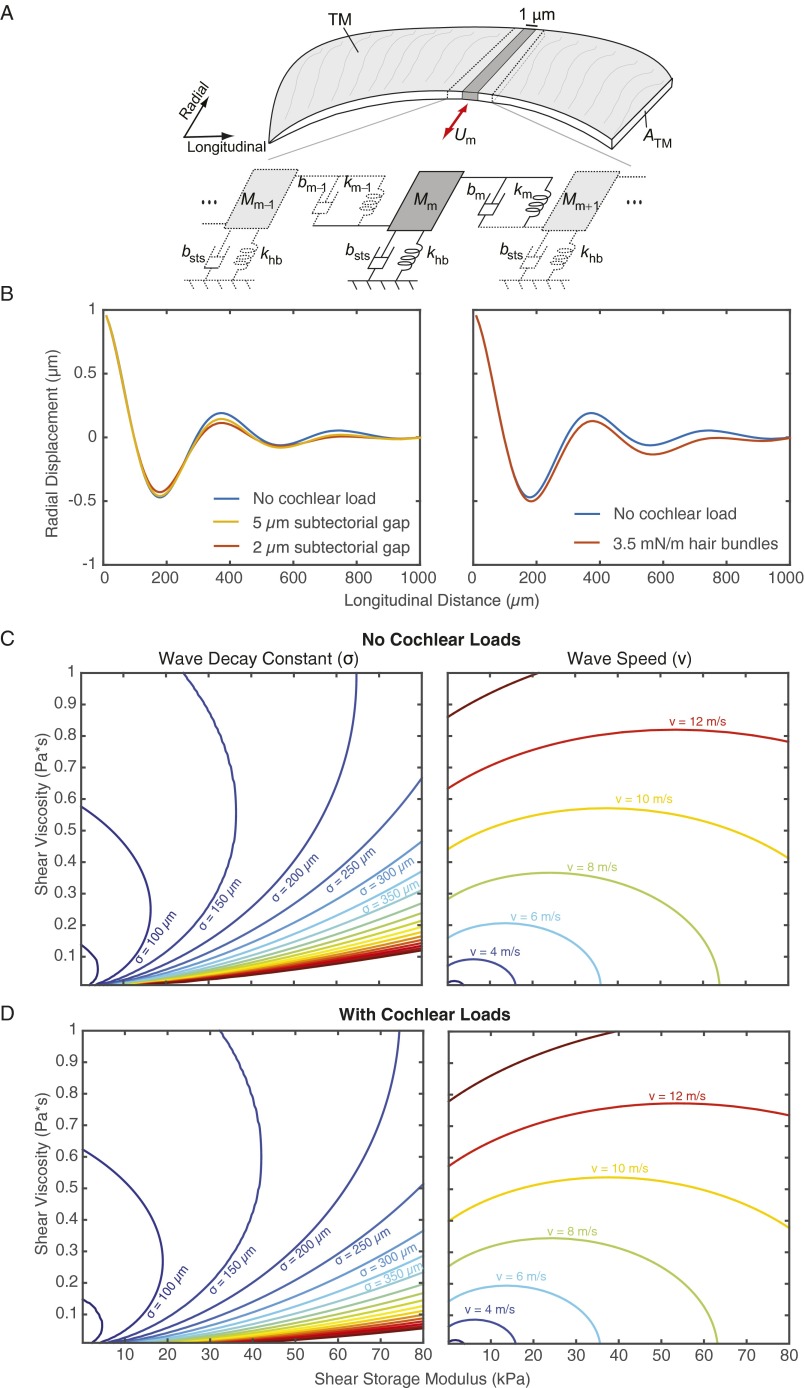Fig. S3.
Effect of cochlear loads on a lumped parameter model of TM traveling waves. (A) TM is represented by a sequence of 1-μm longitudinal sections. Each section is represented by its mass (), which moves with radial velocity (), and is coupled to adjacent masses by springs () and dashpots () that represent the elastic and viscous material properties of the TM, respectively. Each mass is also loaded by a dashpot () that represents the subtectorial fluid and by springs () that represent the stiffnesses of underlying hair bundles. (B, Left) Loading by subtectorial fluid decreases the amplitude of the wave by less than 3% when the gap is 5 μm (yellow line) and by less than 10% when the gap is 2 μm (red line). (B, Right) Loading by hair bundles [0.0035 N/m (48)] increased the wave decay constant by ∼1% (red line). (C and D) Effect of cochlear loads on the relation between TM wave parameters and TM material properties. (C) Contours indicate wave decay constants and wave speeds at 18 kHz. (D) Adding cochlear loads due to hair bundles and fluid loss in a 2-μm subtectorial gap shifts the contours less than 10.

